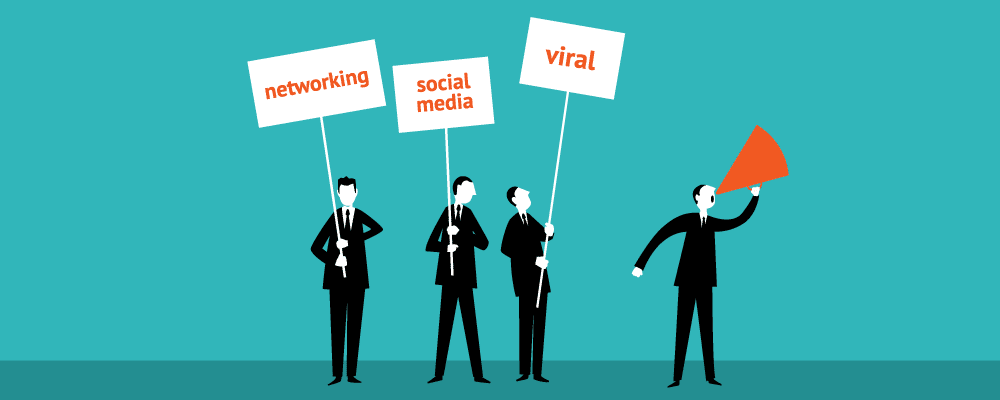Producing great content isn’t enough; you have to make sure your content gets noticed.
Some marketers claim that great content always rises to the top, no matter what. The truth is that getting people to view content organically means cooking up a complicated soup, which consists not only of great material but also a wide range of optimization tools. Optimizing for search engines, building author and site authority, outflanking keyword competition, and writing for geographic relevance — all of these matter just as much as crafting a high-quality piece of content.
Paying for content promotion on social media is an essential part of a comprehensive digital marketing plan. Here are six reasons you should add paid promotion to your social media strategy.
1. Organic Is Still Best, but It’s Getting Harder
Back in spring 2014, Facebook culled many page posts from its news feeds because news feeds had become too crowded. Overnight, companies with thriving Facebook presences saw their numbers plummet. Think about it: Harvard University has an admissions rate of 6.3 percent, meaning that applicants have about a 1-in-17 chance of getting admitted to the elite school. A Facebook post has a 1- to 2-percent chance of getting into someone’s news feed. Your chances of getting into Harvard are better than your chances of getting an organic post to your Facebook fans.
Other networks haven’t been as draconian, but it’s harder to get noticed in increasingly crowded feeds no matter what social networks you use. When nearly every business, celebrity, not-for-profit, and fictional character has its own social network account, a social network feed gets as noisy as the trading floor of the New York Stock Exchange. Don’t give up on organic promotions, but do add paid promotions into your marketing mix.
2. Social Media Pay-for-Promotion Is Cheaper Than AdWords
To reach 1,000 people, the average AdWords customer pays $2.75. To reach 1,000 people on LinkedIn, an advertiser spends $0.75. Reaching 1,000 people on Facebook costs just $0.25. Moz blogger Brian Carter puts it another way: Spending $1 on Facebook promotions every day could get your content in front of at least 4,000 people each day.
3. Social Networks Offer Valuable Targeting Tools
Once you’ve identified your target customer, social networks offer extensive tools for putting your content in front of the right people. Using Facebook’s tools, you can target your ads or promoted posts based on location, language, age, gender, education levels, workplace, interests, and relationship status. You can also create ads targeted to people from your email list.
With Twitter, you can use third-party tools to help aim your promoted content toward the right audience. SimplyMeasured, for example, offers a free tool that helps you analyze your current Twitter followers. You can then aim your promoted tweets or Twitter Cards toward people with similar characteristics.
4. Social Networks Provide Value-Added Tracking and Testing Tools
Social media analytics tools can track customer response to your ads or promoted posts. You can easily see which promoted content received the most clicks, shares, favorites, or re-tweets. Twitter Card analytics let you see which types of Twitter Cards attract the most engagement. It also reveals top influencers that link to your promoted content, which gives you a place to start conversations with people who can amplify your content organically.
You can also use third-party tools like SimplyMeasured or HootSuite to track engagement across multiple platforms. Instead of logging into each social network account and running analytics, you can run reports from a single location. Using these tools, you can perform A/B tests to see which versions of the same promoted posts get the most response. You should test different keywords, headlines, images, post formats, and other messaging to see which earns the most audience engagement.
5. Promoted Posts Increase Chances for Engagement and Sharing
By paying to promote your post, you increase the chances that people might share your content or engage with your organization. Under current conditions, if you post an amazing piece of content to a Facebook page that has 1,000 fans, only 10 to 20 people might see your post. Boosting your post can increase its chances of going viral. Instead of hoping that followers find your content via search query and navigate to their social networks to share it, paid promotion enables sharing from within the social network interface.
6. Paying to Promote Content Is a Great Way to Reach New Customers
In the early days of social media, you’d share great content with your followers, who would then share it with their friends. In some cases, those friends would become new customers for your business. Unfortunately, your fans and followers aren’t seeing your content as often as they once did, so it’s not getting shared with as many new customers. Promoted content gives you a better shot at winning new customers, particularly if you combine your social media paid promotions with promotions on Reddit or StumbleUpon.
Some marketers claim that paid posts don’t elicit as much engagement. It’s true that you might see a high number of initial “likes” and clicks without the repeat engagement that organic shares can bring. However, you can still use information from new “likes” and clicks to gain valuable leads. Some businesses use promoted posts to gather names for their email marketing lists.
4 Tips for Maximizing Your Paid Content Promotions on Social Media
Now that you’ve seen the value of incorporating paid promotion into your social media strategy, follow these four tips to get the most from every advertising dollar you spend:
- Make it shareable. A long article probably isn’t the best piece of content to share in a paid promotion. Instead, share videos, infographics, memes, short blog posts, or “top 10” lists.
- Test your promotions. Try sharing different promoted content pieces on different social networks. Then, evaluate which types of content perform best on which networks. For example, most B2B businesses have better success on LinkedIn than they have on Facebook.
- Identify your objectives. Most people slap up a promoted post, cross their fingers and hope for the best. You’ll have more luck if you create promoted content based on specific goals. These goals could include increasing likes/followers, boosting sales revenue, or gathering new names for internal lists.
- Pivot when needed. Track your results and analyze your numbers so that you’re not stuck on a strategy that’s failing. If you’re spending money to promote content without getting new customers, then you need to spend your money in a more effective way.
The social media sharing game has changed, and your business has to work harder to get noticed. Don’t think of paid content promotion as an expense. Think of it as an investment in your company’s growth.
Need Help With Your Content Promotion Strategy?
Great content motivates action. Every piece of content should encourage users to engage with your brand. Digital Current understands the online habits and emotional buying triggers of your brand’s target audience. Let us show you how to develop and promote great content that amplifies your marketing strategy.


